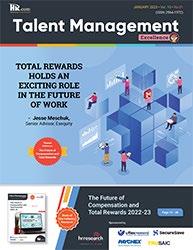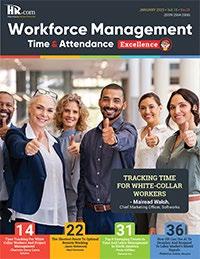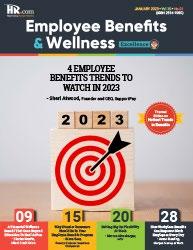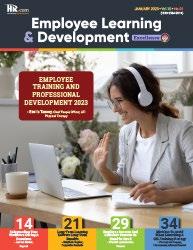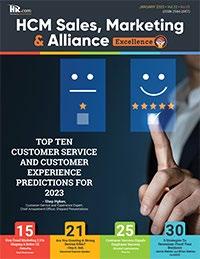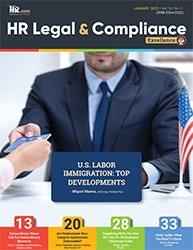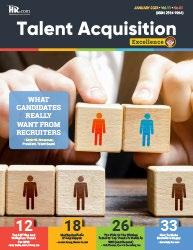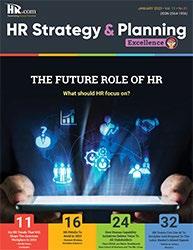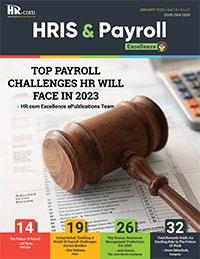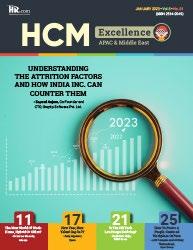
The Three Biggest Scheduling Challenges Employers Will Face In 2023
Technology and a human-first approach will go a long way in transforming employee scheduling and compliance
- Martin Ouellet, Founder

Technology and a human-first approach will go a long way in transforming employee scheduling and compliance
- Martin Ouellet, Founderand CEO, Voilà!
Swear By
Tips from people leaders on improving employee scheduling process - Part I
-
Brett Farmiloe, Founder and CEO, Terkel.ioIt is key to build a hybrid schedule that sets clear requirements and expectations
- Abigail M. Orgeron, Associate, Dykema
Intelligent Employee Scheduling Can Be A Business Differentiator In A Services Economy


Advanced employee scheduling capabilities can make organizations future-ready
- Lakshmi Raj, Co-CEO, Replicon
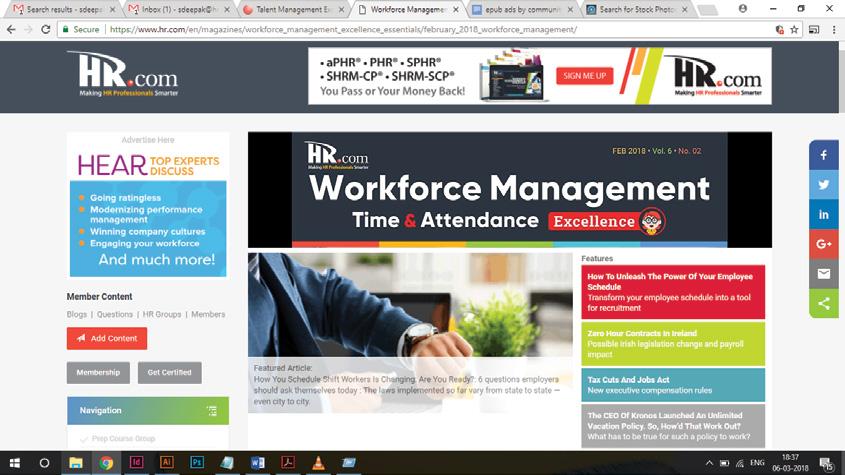
This monthly interactive learning experience showcases activities, processes, and tools needed to manage a workforce.
Virtual Events in the Workforce Management encompasses all the activities, processes, and tools needed to manage a workforce. A comprehensive WFM system includes planning, forecasting, scheduling, and tracking workers to optimize the balance of customer, employee, labour laws and organizational needs. Be informed and understand the latest WFM trends through Workforce Management Virtual Events. Each Virtual Event consists of up to 10 credit webcasts.

HR.com webcasts deliver the latest Workforce Management industry news, research trends, best practices and case studies directly to your desktop. Webcasts are available live online with a downloadable podcast and a copy of the slides (PDF) available before and after each webcast. Earn all of the required recertification credits for aPHR, PHR, SPHR, GPHR, and SHRM Certifications. HR.com’s one-hour webcasts, in every HR specialty including HRIS and Payroll, are pre-approved for HRCI and SHRM credit (excluding Demo webcasts).
Join almost 21,700 HR.com members with a similar interest and focus on rewards and recognition. Share content and download research reports, blogs, and articles, network, and “follow” peers and have them “follow” you in a social network platform to communicate regularly and stay on top of the latest updates. This well established Workforce Management Community is an invaluable resource for any HR professional or manager.
Our mission is to promote personal and professional development based on constructive values, sound ethics, and timeless principles.
Excellence Publications
Debbie McGrath CEO, HR.com - Publisher
Sue Kelley Director (Product, Marketing, and Research)
Babitha Balakrishnan and Deepa Damodaran Excellence Publications Managers and Editors
Deepak S Senior - Design and Layout
Workforce Management, Time & Attendance, Excellence Team

Deepa Damodaran, Editor
Nataraj Ramesh Design and Layout (Digital Magazine)
Chandra Shekar Magazine (Online Version)
Submissions & Correspondence
Please send any correspondence, articles, letters to the editor, and requests to reprint, republish, or excerpt articles to ePubEditors@hr.com
For customer service, or information on products and services, call 1-877-472-6648
Workforce Management, Time & Attendance, Excellence (ISSN 2564-2006)
is published monthly by HR.com Limited, 56 Malone Road, Jacksons Point, Ontario L0E 1L0
Internet Address: www.hr.com
Debbie Mcgrath Publisher, HR.com Deepa Damodaran Editor, Workforce Management, Time & Attendance, Excellence
Thepast few years have been a rollercoaster for anyone in HR. There’s digital transformation, disrupting old ways of working with new ways – and getting used to those new ways means facing resistance to change. There’s the labor shortage and the looming recession, which led to both employee and HR burnout.
All of this is changing the workforce. One of the biggest changes we see is an increasing shift toward an hourly workforce. Full-time or part-time jobs may be out of reach in specific industries or simply do not make sense as a lifestyle choice anymore. And more hourly workers can create a slew of scheduling challenges for HR departments.
In this edition, we bring you a set of expert articles, where workforce management experts share their outlook on the employee scheduling trends and challenges that await the corporate world in 2023.
Featured on the cover, this month, is Scheduling Employees To Work In California: Easier Said Than Done, where CDF Labor Law LLP Partner Nancy Lubrano goes in-depth into the scheduling problems that plague managers and business owners regularly, especially in California with its complex set of wage and hour laws.
In The Three Biggest Scheduling Challenges Employers Will Face In 2023, Voilà! Founder and CEO Martin Ouellet lists down some of the biggest challenges HR will face this year.
Check out Terkel.io CEO and Founder Brett Farmiloe's article, where he discusses the 10 Employee Scheduling Techniques Leaders Swear By
Dykema's Abigail M. Orgeron, in her article Hybrid Work Schedules: A Wolf in Sheep’s Clothing, touches upon the legal issues companies will face with hybrid work schedules, and how to over those challenges.
This is not all!
This month’s issue of Workforce Management, Time & Attendance, Excellence brings you several other informative and educational articles that we hope will help you achieve excellence and efficiency in your workforce management efforts.
Happy Reading!
In a world of unparalleled challenges (global pandemic, racial injustice, political rivalry, digital 4.0, emotional malaise), uncertainty reigns. Finding opportunity in this context requires harnessing uncertainty and harnessing starts with reliable, valid, timely, and useful information. The Excellence publications are a superb source of such information. The authors provide insights with impact that will guide thought and action.
Dave Ulrich
Excellence publications are my ‘go-to’ resource for contemporary and actionable information to improve leadership, engagement, results, and retention. Each edition offers rich and diverse perspectives for improving the employee experience and the workplace in general.
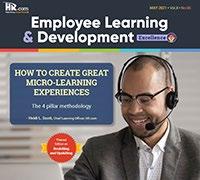
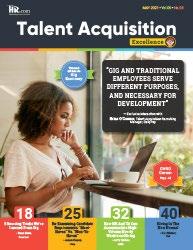
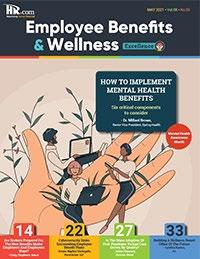


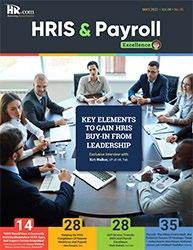
 Julie Winkle Giulioni Author, Virtual /Live Keynote Presenter, Inc.’s Top 100 Leadership Speakers
Julie Winkle Giulioni Author, Virtual /Live Keynote Presenter, Inc.’s Top 100 Leadership Speakers


I regularly read and contribute to Leadership Excellence and Talent Management Excellence. I use many of the articles I read to augment my own presentations and I often share the articles with my clients. They are always quick, right on target for the latest issues in my field, and appreciated by my clients. If you want to stay up to date on the latest HR trends, choose a few of the different issues from the Excellence series of publications.
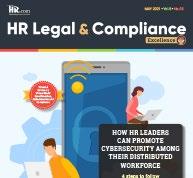

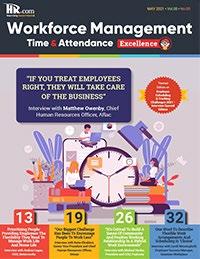
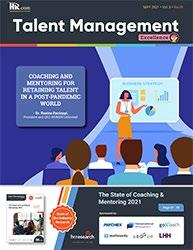
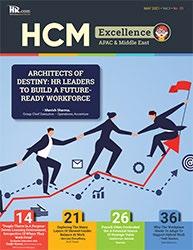
We’re eager to hear your feedback on our magazines. Let us know your thoughts at ePubEditors@hr.com
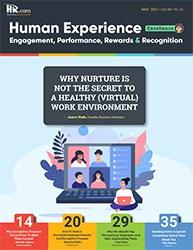 Rensis Likert Professor, Ross School of Business, University of Michigan Partner, The RBL Group
Rensis Likert Professor, Ross School of Business, University of Michigan Partner, The RBL Group
Scheduling problems plague managers and business owners regularly, especially in California with its complex set of wage and hour laws. There are the day-to-day practical issues (i.e., callouts, no-call no-shows, and tardiness) that employers must deal with, and there are the legal pitfalls that businesses often do not see coming when they are simply trying to manage staff, satisfy customers, and keep the business running.
This article discusses some of those issues and ways to avoid legal blind spots, as well as practical tips on workforce management.
Alternative work week schedules (“AWS”): Sometimes, to be accommodating, employers are agreeable to alternative work schedules without knowing that such accommodations have serious legal ramifications.
California employers may create an AWS which allows their employees to work a daily schedule in excess of an eight-hour workday (usually four 10-hour days, instead of five 8-hour days) and avoid some overtime, but not all, overtime.
Implementing an AWS requires strict adherence to state guidelines. Failure to follow the required procedures will invalidate the schedule and expose
the employer to unpaid wage liability, plus interest, civil penalties, and attorneys’ fees.
While the recently proposed federal legislation has been aimed at creating more flexibility in scheduling workers, particularly due to the increase in remote work, California laws require careful consideration. Likewise, flexible schedules may boost employee morale, improve attendance, increase productivity, and help with recruiting and retention, but such flexibility must be balanced against the complexities and challenges of complying with California’s employment laws and the costly consequences of non-compliance.
Thus, California employers should exercise extreme caution when considering the implementation of flexible work schedules and consult with counsel.
Split Shifts: Split shift is a work schedule that is interrupted for longer than a bona fide meal period, within the same workday and that is an unpaid time determined by the employer. For example, it is common for restaurant workers to work a breakfast or lunch shift and then return later to work the dinner shift pursuant to the employer-prepared schedule. If an employee requests the interruption, then it is not a qualified split shift.
Employees who work split shifts are entitled to premium pay of one hour at the state minimum wage, or the local minimum wage if one applies, whichever is greater. An adjustment to the premium pay will apply when employees earn more than minimum wage.
Importantly, in today’s remote work atmosphere, employees who reside at the place of employment (such as their home) are exempt from the split shift premium
Employers must make sure that wage statements properly reflect split shift premium and should consult employment counsel to ensure their wage statements are in compliance.
Scheduled Short Shifts: Scheduling employees for shorter shifts can become tricky in relation to meal break requirements. For instance, an employee may be scheduled to work no more than five hours, and thus is not entitled to a meal break. But unexpected challenges may occur in the workplace where an employee whose shift was scheduled to end before working five hours is asked to stay longer.
Now, the employee must start a meal break by the end of the fifth hour worked (unless the employee is certain to not work over six hours and voluntarily waives the meal break). If the employee does not start the meal break by the end of the fifth hour worked, works up to six hours, and does not voluntarily waive the meal break, the employer is liable for a meal break premium payment at the employee’s regular rate of pay.
As a reminder, meal break waivers are permitted if the employee does not work over six hours. Otherwise, California law requires the employer to provide the employee with an opportunity to take a duty-free, uninterrupted meal break of at least 30 minutes before the end of the fifth hour worked.
Managers and business owners are making decisions on the fly when unexpected staffing needs arise to keep customers and employees happy. Juggling these challenges while navigating labor laws can be
extremely challenging and costly if issues, such as timely and compliant meal breaks are overlooked in the heat of the moment.
Reporting Time Pay: “Reporting time pay” are wages designed to compensate employees who are scheduled to report to work, but when they report for a scheduled shift, they are not put to work for at least half of their scheduled shift. Not all situations trigger reporting time pay. For instance, when an employer cannot operate its business because of threats, or when civil authorities recommend that work not begin or continue, or when public utilities fail to supply electricity, water, or gas, or when the interruption of work is caused by an Act of God or other cause not within the employer’s control, like an earthquake.
However, when reporting time pay is triggered, the employer must pay the employee for at least half of the usual or scheduled day’s work, but in no event for less than two hours or more than four hours, at the regular rate of pay.
Make-Up Time: California law permits employers to accommodate limited make-up time (another form of flexible scheduling) at the employee’s request, and never at the employer’s request if specific requirements are satisfied. Not surprisingly, failure to comply with the requirements will likely expose the employer to liability.
All of the above scenarios give rise to potential unpaid wage claims and other derivative claims and penalties come along for the ride adding up to crippling liability in some cases. California employers must stay vigilant about employment law compliance.
Short staffed: Predicting workplace labor needs can be difficult and unexpected work increases happen. Similarly, unplanned employee absences can throw a wrench in operations and seriously diminish customer satisfaction. How can employers best prepare? Build a diverse bench of employees with flexible availability.
Some employees are always willing to earn additional wages. Consider offering incentives to account for those employees that do not like to be called to work last minute. If you make it worth their while, they show up for you. That said, any additional compensation may impact the proper calculation of overtime and other premium pay. Do not lose sight of that pitfall.
Overstaffed: Labor costs are a top operating expense. Paying employees to do nothing is not an option. However, not having enough help will impact operations, customer satisfaction, and employee morale. It might be worth scheduling an extra shift to make sure you do not find yourself in a bind. Consider those extra tasks that always need attention, but rarely get done for various reasons. Cross-training team members may help.
Terminations/resignations: Poor employee retention can wreak havoc on business operations and morale. Increased retention can be achieved by improved and open communication, offering affordable perks or other fringe benefits (hopefully without implicating wage and hour laws), and developing preferred schedules that address employee needs. Offering

increased wages is the most obvious solution, but not always possible.
Time-Off: Everyone needs time off from work. Employers must acknowledge this need and plan for it. This may require extra training so that employees can fill in for those who are taking time off. Again, cross-training will strengthen your team as a whole.
Would you like to comment?
Nancy “Niki” Lubrano is a Partner at CDF Labor Law LLP, where she specializes in defending California employers in labor and employment litigation (including all forms of discrimination and harassment, wrongful discharge, and wage and hour litigation). She also regularly provides employer advice and counseling, including sexual harassment prevention training.Building an engaged and satisfied workforce requires many things including; salary and benefits, opportunities for career advancement, company culture, workload, work-life balance, perceived fairness, and equity.

However, have you considered how employee scheduling can positively or negatively affect employee engagement and experience?
For many of us who work the same days and times each week, we know exactly when and where we are working. However, there is a range of industries out there where employees work variable shifts and times, such as; healthcare, retail, manufacturing, hospitality, services, and areas within the public sector, such as law enforcement and transportation.
My first experience with a schedule was as a waitress when I was in university. Each week the schedule was handwritten and placed on the wall in the kitchen. I rarely got that Saturday night off, but I can not complain as it was
a great night for tips. This was all well and good as my manager was dealing with a small number of employees and if I needed a Saturday night off, I just asked the week before and a note was put in the diary.
This is not so easy if you have to schedule a large number of employees, with various skills, across multiple departments, 24/7, and possibly in multiple geographical locations. How do you ensure fairness and equity, enable employees to enter their preferences, and fill gaps if someone rings in sick at the last minute, so that employees already scheduled have the support they need?
If not done right, this can lead to a bad employee experience, job dissatisfaction, and low employee engagement. In this article, I look at the link between scheduling and employee engagement and experience.
The importance of employee engagement cannot be overstated. Engaged employees are at the heart of every successful business. Organizations that prioritize employee engagement and experience are far more successful at retaining employees, increasing workforce productivity, and boosting their organization’s overall performance and profitability.
Unsurprisingly engaged employees are substantially more productive than non-engaged workers. Furthermore, organizations that prioritize employee engagement have lower staff turnover and absenteeism rates.
Here are a few of the benefits of employee engagement to an organization;
● Increases productivity and efficiency.
● Boosts employee retention.
● Improves morale, loyalty, and job satisfaction.
● Increases employee well-being and reduces absenteeism.
● Enhances customer service and experience.
Engaged employees tend to be high and innovative performers, who are committed to their organization.
Compare this to employees who are not engaged and will instead;
● Put in minimal effort.
● Have little motivation.
● Be disruptive.
● Waste time.
● Call in sick.
● Produce substandard work.
● Have a bad attitude.
● Undermine co-workers.
This can have a huge effect on the success or otherwise of your organization.
According to a Gallup Poll "Quiet quitters" make up at least 50% of the U.S. workforce. Quiet quitting emerged in the early 2020s, fuelled largely by social media. It means doing the minimum requirements of your job and putting in no more time, effort, or enthusiasm than absolutely necessary.
According to Gallup, U.S. employee engagement took another step backward during the second quarter of 2022. The percentage of engaged workers stayed at 32% but the percentage of actively disengaged increased to 18% up from 13% in 2019. Gallup also found that the workplace has gotten worse for younger employees. They found a decline in engagement and employee satisfaction among remote Gen Z and younger millennials. Mastering the art of employee engagement and experience is no easy task, but there are some proven methods including better and more flexible employee scheduling.
Improved employee scheduling can help to create a better employee experience at work. We know that employees expect more freedom about where and when they work and are even prepared to give up benefits and perks to achieve this.
While employee scheduling technology alone can not create an engaged workforce, it can assist in areas including; standardizing policies for fairness and equity, empowering employees with more flexible scheduling, encouraging employee self-service, and managing and reducing absenteeism.
Let us have a look at each area in a little more detail.
Standardizing your organization’s rules and policies in relation to your workforce will promote a sense of equity and fairness. Consistency and transparency are key when it comes to managing and engaging employees. They need to clearly understand the processes and policies behind procedures and be confident that they are being applied fairly across the organization.
A good scheduling and workforce management system will assist you to do this. It enables administrators to implement and configure policies and ensure these policies are followed correctly and standardized across the entire organization.

More flexible working has been proven to increase employee engagement, job satisfaction, and retention. When you give employees the flexibility to balance their work responsibilities with the rest of their busy lives you empower them and reduce stress and absences and improve mental health and well-being. Employees who have the opportunity to make use of workplace flexibility show increased commitment and engagement and improved performance. Offering workers more say over their schedules enables them to have more control over their personal and working lives.
If you offer employees self-service facilities you can increase productivity across your entire organization. Employee self-service solutions enable employees to enter their own schedule preferences, requests, and time off. This empowers employees and gives them greater control over their working lives. If your organization allows it, employees can apply for additional shifts or swap shifts with colleagues.
Giving employees more control is a proven method of increasing engagement and experience. Furthermore, automating these processes reduces the pressure on departments such as HR, finance, and operations along with line managers.
Employee absenteeism is one of the most persistent obstacles to a company’s productivity and profitability. Absenteeism causes overtime, dissatisfied customers, and low morale in other employees who are expected to cover for their absent colleagues. Unengaged employees tend to have higher rates of absenteeism and if not tackled early on this can have a hugely negative effect on an organization.
Giving employees more control over their schedules by allowing them to enter their preferences will mean they are less likely to be absent for non-genuine reasons.
Scheduling solutions are brilliant for helping organizations balance work requirements with available human resources. They can help companies to meet their strategic objectives in an efficient and cost-effective manner.
But today’s scheduling solutions go beyond driving productivity, efficiency, and cost control. Recent advances in this technology have focused on developing systems that not only benefit an organization’s operations and bottom line, but also benefit the working lives and experiences of their employees.
The most successful organizations today are the ones that are putting their employees in control. They view them as their internal customers and are dedicated to serving their needs as well as the needs of the business. By doing this, they foster a culture of empowered, engaged, and motivated employees, who are more satisfied, productive, and loyal due to a more positive work experience.
Would you like to comment?
Mairead Walsh is the Chief Marketing Officer of Softworks.Thepast few years have been a rollercoaster for anyone in HR. There’s digital transformation, disrupting old ways of working with new ways –and getting used to those new ways means facing resistance to change. There’s the labor shortage and the looming recession, which led to both employee and HR burnout.
All of this is changing the workforce. One of the biggest changes we see is an increasing shift toward an hourly workforce. Full-time or part-time jobs may be out of reach in specific industries or simply do not make sense as a lifestyle choice anymore. (We are not hearing many people ask for the return of the long commute!) And more hourly workers can create a slew of scheduling challenges for HR departments.
Here are three we see, with some corresponding solutions.
Underlying workforce issues like overscheduling, slow or inefficient time-off requests, and last-minute absences and replacements are all costly errors ripe
for streamlining. For example, as more employees started working from home over the last couple of years, many have felt more overscheduled than ever.
We see symptoms of these problems in the quiet-quitting and quiet-hiring trends. Some of these issues can be addressed through leadership – building a great culture or having honest conversations about when and how individual employees want to work.
But scheduling also has its place, especially when trying to avoid overloading employees and HR teams. Look for ways to lean into technology to improve inefficiencies.
One of technology’s greatest assets is reporting and analytics, which, if used correctly, can proactively identify eventual challenges like employees who are being overworked. Automation can also help improve visibility by making sure all time-off requests are seen and addressed promptly, keeping employees and managers on the same page.
The manufacturing industry provides a practical example. The industry depends on the latest production technology, but workforce management technology has yet to keep pace. Some companies still use antiquated clocking systems that can encourage time theft, like buddy punching, where a friend clocks in for a coworker who is running late.
By switching to software-based, geofenced time clocks, you can reduce time theft while giving employees more freedom, so they do not feel tied to the clock.
Employee burnout is rising, and there is currently no great alternative to combat it. Employee engagement may be consequently dropping, and most current HR tools or systems are not prepared to consider labor shortage as a cause for this. It takes visibility
for both sides to know how much your workforce is actively working and how often.
But a change in mindset could open up new opportunities. Here is an example. The healthcare industry has shown us that allowing employees to create their schedules grants them control over their work and their lives as a whole. While employees often try to reduce their overtime, some are looking for the flexibility to choose when and where they will contribute.
We have trained our recruiting professionals to deal with transferable skills, but we have not done the same for the shift-based industry. How amazing would it be to reduce the labor shortage by leveraging the workers we already have and training and assigning them to other tasks? This is an opportunity to reduce the pressure on workers and build transparency and engagement.
Also, instead of bulking up the HR department to support an interview and recruiting process that is already standard for full-time employees, let us try something new: identifying and promoting employee mobility through shift pools, both internally and across partner companies. For a long time, shift-based workers have been ready and willing to pick up extra shifts; it is just that the communication and assignment process was too rigid to be convenient for both parties.
Labor laws are complex. They are especially complex when you must comply with multiple layers of laws and regulations in a patchwork of different jurisdictions. For example, in the past several years, a number of states have passed laws regulating predictive work scheduling. Usually, these laws stipulate that companies post work schedules two weeks in advance and may carry additional recordkeeping requirements.
These laws are meant to protect workers from unscrupulous employers, but complying with them is an extra challenge for HR. This is another area where automation can help. Software can already handle
the patchwork of tax laws across both federal and state levels, so HR could increase the technology’s scope to make compliance a matter of simply checking the right settings.

Technology and a human-first approach -- focused on how and when people want to work -- go a long way in transforming what we thought was broken. In an economy with growing competition and shorter turnaround times, we need to make the most out of every person who’s willing and already in our ranks. Why not start today?

Martin Ouellet is the Founder and CEO of Voilà!. A career entrepreneur and angel investor, Martin Ouellet always had a passion for innovation. Since founding and eventually selling his first company Taleo, an HR platform, Martin is dedicated to investing in growing emerging technology companies and the evolution of Québec’s entrepreneurial potential.
Would you like to comment?
Wedid not ask for the Covid-19 pandemic. We did not ask to work from home. However, in March 2020, it was forced upon us.
At the time, it did not look like there was going to be an end, and this was going to be “the new normal.” We are now out of the pandemic. Many companies have returned to work at the office, but we also learned the benefits of working from home for the company and its employees.
Should we go back to the office full-time? Should we work remotely full-time? Should we deploy a hybrid mode? And, in the context of this article, should you trust employees who work from home? Or, even better, what can you do so you can trust them?
A spring 2022 survey of 25,000 American employees showed that 58% of them were offered by their employers the option of working from home full-time (35%) or part-time (23%), and that 87% of those offered such an option accepted it. This varies, obviously, by industry, where the computer industry was the highest (89%) and the production and food preparation industries the lowest (29%). No doubt, remote work is highly contextual.
Other statistics show that the number of Americans working from home was 6% in pre-pandemic 2019, went up to 41.7% in 2020 at the height of the pandemic, and is now down to 26%, but expected to increase (intentionally). By 2025, more than 36
million American employees are expected to be working remotely.
Some surveys showed that working from home increases productivity, while others show a decrease in productivity. Again, the impact on productivity would be highly contextual. Many employees believe that working from home increases their work-life balance (75%), reduces absenteeism (56%), improves morale (54%), and increases their engagement (62%).
There is no point in making a general determination of whether companies should continue (or move toward) working remotely, in a hybrid way, or from the office, as the answer is highly circumstantial and depends on specific employees and specific tasks. When making that determination, we should consider the following:
● Remote work is not appropriate for any job. It is not suitable for production and food preparation employees, pilots, drivers, soldiers, police officers, etc.
● Not every person can work from home. The distractions are often more than the employee can handle, resulting in reduced productivity and possibly even reduced job satisfaction. Some people (for example, extroverts) need in-person human interaction to be productive, while others (introverts, for instance) might appreciate and thrive working alone remotely.
● There have to be the proper environmental conditions for working from home that should at least equal those in the office, including the workspace, ergonomics, lighting, noise level, etc.
● Some jobs require constant teamwork, while others may not require collaboration at all. A book editor, for example, does not work within a team. If teamwork is needed, it could be adversely affected when team members work separately from their respective homes. There will be no constructive conflict which is so vital for productivity and creativity, and the reduced amount of interaction time, as well as the intimacy of such interactions (email vs. face-to-face), would be reduced, negatively impacting trust within the team.
A comment worth making is that we increase individualism when we allow or support working individually from home. The ongoing individualistic trend will only accelerate. One study showed that individualism in values and practices has increased in English-speaking countries by 60-69% over a 51-year period.
Since empathy (the opposite of individualism) is a key component of trust, increasing individualism would reduce trust and drive employees to feel that the world revolves around them. The transition to working from home makes employees more concerned about their own welfare, working conditions, and work-life balance, sometimes at the expense of what they contribute to the company. That further increases individualism.
In a LinkedIn poll I conducted, I asked the question, “Can employees be trusted to work remotely?” Out of 62 responses, 63% replied that employees can be trusted without limitations, and 24% said that employees can be trusted to work remotely only if monitored.

Technology evolution accelerated during the pandemic, like during any crisis or war. But not only tools that enhance productivity were developed, tools
allowing managers to monitor and track employees working remotely were also created. Those include tools that track email communications, keyboard, and mouse activity, and even use embedded cameras and microphones (which brings the privacy issue). More and more companies started offering such products because more companies have demanded and deployed them.
The problem with those monitoring and tracking tools lies in the 6th law of trust: trust is reciprocal. When you trust someone and you show them that you trust them, they will behave in a trustworthy way. In fact, if they believe you trust them more than they deserve, they have two options: either discourage you from trusting them as much (which they will rarely do), or work hard to live up to the level of trust you demonstrate you have in them.
At times, you may have more trust in them than they have in themselves. Either way, when you trust them and show them that you trust them, you will increase their trustworthiness.
But the opposite is true, too. When you distrust them and show them that you distrust them, or don’t show them that you trust them, they will behave in an untrustworthy way. I have seen YouTube videos, where employees demonstrate hacks to get around such monitoring software installed on their computers.
The bottom line is: if you can not trust your employees, and it is not because they are untrustworthy, then you cause them to be untrustworthy. And if you do not trust them because they are untrustworthy, you hired the wrong employees. Your problem is not whether you can trust them remotely. It is whether you can trust them at all.
This article should not discourage you from considering remote work as a company or an employee. It should encourage you to consider the following and take these steps to make it work well:
● Remember that no one size fits all. Remote work is not appropriate for all jobs, at all times, and for the entire company as a whole.
● Remote work is not appropriate for all employees (regardless of their jobs). Make sure you assess the employee’s ability to work remotely and that it will not reduce their productivity or job satisfaction. Consider training employees on how to effectively work remotely and provide them with the tools and work environment required for that purpose. Consider a trial period not only for the company, but also for the employee to find whether remote work is, well, working for them.
● Compensate for the reduction in time and intimacy of interactions between employees. Schedule enough time for interaction regularly and in a predictable (rather than ad-hoc) manner—drive interactions to take place in person (maybe on a particular day of the week) or at least over a video call. The ability to read body language and observe the consistency between body language and content increases trust.
Email and written messages force the recipient to read between the lines and make assumptions, which reduces trust. Even when the job can be done remotely with minimal team interaction, consider (1) a weekly team meeting or video call, (2) a weekly supervisor-employee one-on-one call, (3) a short daily brief call in the morning, and (4) a short daily debrief call in the
afternoon. Do not allow too much time to pass between interactions. Trust declines between them.
● Change the communications strategy. Consider information as static, and communication as moving information from one person to another. Make information available and accessible to team members, but communicate only what’s necessary for the other person to know now. Do not push what they do not need to know, or they will spend all day reading your messages. It is enough that all the information they need is available to them when they want it.
● Use empathy. Managers must consider what things feel like from the employee’s perspective, and employees must consider what things feel like from their manager’s perspective. When you don’t consider what things look or feel like from the other side, you are not empathetic to them, and their trust in you will decline.
● Don’t monitor employees. If you do not trust them because they are not trustworthy, then you have the wrong employees. But if you monitor them, showing them that you do not trust them, they will justify that distrust.
Dr. Yoram Solomon is the author of The Book of TRUST and host of ‘The TRUST Show’ podcast. He published a total of 16 books, 9 patents, and was one of the creators of Wi-Fi and USB 3.0 technologies, for which he was dubbed "TI's Great Innovator." Dr. Yoram was named as one of the top 10 global thought leaders in Culture and in HR by Thinkers360, and as one of the Top 40 Innovation Bloggers by Innovation Excellence. He was a columnist at Inc.
Would you like to comment?



One technique to improve employee scheduling is to use a scheduling software or app. This can automate the creation and publishing of schedules and also allow for easy communication and updates between employees and managers.
It can also help with tracking time-off requests, shift trades, and schedule conflicts. This technique can save time and reduce the potential for errors in the scheduling process, while also providing more transparency and flexibility for employees.
Additionally, it can help managers make better decisions when creating schedules, by providing real-time data on the availability and performance of employees.
 Brandon Brown, CEO, GRIN
Brandon Brown, CEO, GRIN

One technique I use to help improve my employee scheduling process is continuously evaluating the workplace and its needs. This helps me ensure that I'm leveraging my team's talents, creating efficient shifts, and avoiding overlap or staff shortages.
Others should consider adopting this technique for their own scheduling processes because it allows them to establish an effective and organized workflow based on their current resources. Plus, this practice helps managers develop a better understanding of their team's capacities and capabilities, which can lead to more accurate staffing needs in the future.
Michael Fischer, Founder, Elite HRT

The main hiccup in the employee scheduling process is the back-and-forth between employers and employees due to overlapping requests. So, I use a lottery system, and I recommend you do the same because you won't have to spend precious hours deciding which employees to give preference to.
My employee scheduling process will look something like this:
● Start by gathering employee names, positions, and contact numbers.
● Ask for their availability and fill it into an employee scheduling template.
● If there are overlapping requests, randomly pick which employee to give preference to.
● Schedule the remaining slots in the template and distribute it among staff members.
Plan out a two- to three-week agreeable schedule on your calendar or scheduling app so that employees can view their work timetable in advance. There are two benefits to this:
1. It gives employees control to modify their own schedules.
2. It allows enough time for changes to be made in case your assigned schedule doesn't work out for employees.
Doing this reduces absences and cancellations of shifts with little to no prior notice.
Max Wesman, Chief Operating Officer, GoodHire
One technique I use to help improve my employee scheduling process is the use of shift swapping. This technique allows employees to trade shifts with one another if they cannot make their scheduled shifts, while still ensuring that our staffing needs are met.
Shift-swapping should be adopted because it gives employees more flexibility in their schedules, leading to greater job satisfaction and improved morale. This reduces the time managers spend making last-minute adjustments to the schedule because of absences or unexpected changes in employee availability.
Jimmy Minhas, CEO & Founder, GerdLi Scott Lieberman, Owner, Touchdown Money
Scott Lieberman, Owner, Touchdown Money
Life is pretty unpredictable, and being always armed with a backup doesn't reek of pessimism. To build very resilient employee schedules that are yet flexible and adaptive to unanticipated emergencies, it is crucial to have a ready pool of standby employees to tap into when the need spontaneously arises.
To ensure outputs don't drop, this on-call (reserve) team must proportionally mirror the quality of the employees who traditionally handle such roles. We must clearly educate this standby staff about their auxiliary roles, and they should be comfortable being called upon spontaneously. They must yet be motivated to perform despite being seen as "spare."
For improved consistency and reliability, agree on specific hours with this reserve team when you can call on them unannounced. This way, they are not totally caught unawares when you come calling for their input.
I believe that the most important thing about setting a schedule is allowing your employees to change it when needed and providing the flexibility without which work can become a heavy burden.
Of course, I'm not saying that there should be no structure at all, and that employees may just come and go as they please: running a business this way would be pretty much impossible. Instead, have an understanding and human approach to the matter, as you can never predict certain events.
Sometimes, obstacles will appear, and you should give your staff the time they need to deal with them. Try to accommodate your employees' needs, and you will increase retention, prevent burnout, and be seen as a good, generous, and kind manager. In the long run, this means better cooperation for all parties involved.
Piotrek Sosnowski, Chief People & Culture Officer, HiJunior
 Lotus Felix, CEO, Lotus Brains Studio
Lotus Felix, CEO, Lotus Brains Studio
One personal method I use to help improve my employee scheduling process is creating a spreadsheet with all the necessary information. This spreadsheet should include employee contact information, availability, and job requirements. Having all this information in one place makes it easier to create and adjust employees' schedules quickly.


I also find it helpful to set up alerts or reminders for when shifts need to be updated or filled. Others should adopt this technique because it is an efficient and organized way to manage employee scheduling. Additionally, having all the necessary information in one place makes it easier to find and fill open shifts or adjust existing schedules quickly.
Mina Elias, CEO & Founder, TriviumOne technique I employ is to submit my schedule to my employees to review early. The first week of every month, I post the new schedule for the following month. I manage a remote team of 10 employees and collaboration is key to our success for our clients. Because of this, I have to blend a mixed schedule across multiple time zones, so if changes need to be made, I want lead time to figure it out.
I make use of Shiftboard, which is a scheduling app, and it allows me to communicate scheduling issues directly with my employees. Any manager that faces tough scheduling scenarios should make use of a scheduling app, but more importantly, make a habit of submitting their schedules well in advance.
By doing this, you take the stress out of employee scheduling and changes that need to be made are not time sensitive when you give yourself enough lead time.
William Varney, Product Strategist, Megaphone Marketing
One of the most important techniques I use to help improve my employee scheduling process is communication. I make sure I am consistently checking in with my team, asking if they have any pressing commitments or availability issues to be aware of before I draw up our schedule.
Additionally, rather than just telling them their assigned shifts, I hold off-the-record meetings so we can discuss why certain teams are being built and how everyone can work together to best support the needs of the business.
I have found that this approach allows employees to buy into the scheduling process and become invested in making it successful. This technique should be adopted by other managers as it serves both the employees' and employers' needs and goals for effective scheduling.
Benjamin Okyere, Data Engineer, Stress Reliever
Brett Farmiloe is the Founder and CEO – and currently CHRO - of Terkel.io . Brett is an SHRM Influencer and has also been a keynote speaker at several state SHRM conferences around the topic of employee engagement."
Would you like to comment?

Show that management values the importance of the HR function, and has a commitment to development and improvement of HR staff.
Ensure that each person in your HR department has a standard and consistent understanding of policies, procedures, and regulations.
Place your HR team in a certification program as a rewarding team building achievement.
Certified HR professionals help companies avoid risk by understanding compliance, laws, and regulations to properly manage your workforce.
HR Professionals lead employee engagement and development programs saving the company money through lower turnover and greater productivity and engagement.
A skilled HR professional can track important KPIs for the organization to make a major impact on strategic decisions and objectives, including: succession planning, staffing, and forecasting.
1 Less expensive than a masters or PhD program, and very manageable to prepare with
2. legislation and best practices
3. Recognized, Industry benchmark, held by 500,000+ HR Professionals
We offer group rates for teams of 5+ or more for our regularly scheduled PHR/SPHR/ SHRM or aPHR courses.
For groups of 12+, we can design a more customized experience that meets your overall length of the course.
Groups rates for HRCI exams are also available as an add-on.
All group purchases come with 1 year of HR Prime membership for each attendee to gain the tools and updates needed to stay informed and compliant

In2023, 23 states and almost 30 cities are increasing the minimum wage. While some small business (SMB) owners fear they will not be able to keep up with rising wages, this change provides an opportunity for SMBs to compete with larger companies for top talent and strengthen their workforce in an increasingly competitive job market.
Small businesses have been facing increasing competition from larger companies, due in part to the higher wages and remote work opportunities offered by larger companies, which have set a higher bar for what workers expect from their employers.
● Walmart, the largest private employer, raises the minimum wage to $14/hr
● Amazon raises pay for frontline workers to $19/ hr
● Target wages range from $15 to $24/hr based on the local market
This shift can be seen as an opportunity for small businesses to level the playing field. Clear wage expectations also set the foundation for greater pay transparency and make it easier to attract strong potential candidates who may have never considered working for a small business.
Additionally, recent studies have shown that pay transparency can lead to better business practices,
increased employee job satisfaction, and improved overall productivity.
Small businesses are compelling for job seekers because they can offer benefits that larger companies historically have not been able to provide.
Some potential benefits small businesses can highlight to candidates include:
● Flexibility and work-life balance While large corporations may only offer pre-determined vacation packages or work hours, small businesses can often accommodate employees’ scheduling and vacation time needs.
● Professional growth opportunities. Small businesses often have fewer layers of management, meaning that employees have more direct access to experienced professionals with knowledge and expertise in the industry, which can open the door for more mentorship and career development opportunities.
● Demonstrate purpose and meaning. Small businesses can stand out in a crowded job market by emphasizing the sense of purpose and contribution that employees will have within the organization. When job seekers recognize that they can make a difference in a small business they tend to become more engaged in the position and more likely to stay with the company longer if hired.
In a small business, leaders often perform the tasks of any unfilled positions, taking away valuable time that could be spent on other parts of the company.
Now may be the right time to take advantage of a favorable job climate and expand the team. Here are some steps SMBs can take to make the most of this opportunity:
● Create a compelling and concrete job ad Create an accurate job description that includes duties, responsibilities, qualifications, and expected outcomes.
● Consider the immediate costs Estimate the costs associated with hiring someone new before bringing them on board. Remember to factor in what type of impact it might have on the team and their workflow. How long will more overlap and assistance be needed from other team members? At what point should the additional hire speed up progress instead of slowing it down?
● Evaluate local market conditions Consider what other businesses in the area are doing regarding
staffing levels and pay rates for similar roles. This can provide valuable insight into how competitive the local market is for talent.
● Listen to customers Are they asking for services or products not currently offered but could be provided by additional staff members? Are they consistently mentioning something in online reviews? Attention to customer feedback can help identify opportunities where additional hires could help improve service or increase sales revenue.
Minimum wage increases should be viewed as an opportunity to improve employment practices. By taking deliberate steps, small businesses can take advantage of the current job market and be better prepared for future market changes.
 Sid Upadhyay is the CEO and Co-Founder of Wizehire .
Sid Upadhyay is the CEO and Co-Founder of Wizehire .
Would you like to comment?


Once quarantine orders lifted, the shift from fully remote to hybrid work left many companies without set policies.
A stark difference then emerged between returning to work on a written policy of two days remote and three days from the office, and allowing employees the option to continue working remotely at will.
Hybrid schedules that do not have clear requirements or expectations are causing employees burnout, frustration, lowered productivity and even leading them to quit.

A hybrid work policy that does not include set parameters or expectations leaves employees with greater amounts of stress when deciding whether to work remotely. For example, employees often lack clear guidance from upper management regarding attendance expectations and, as a result, are concerned about making the “wrong” decision about whether to come into the office on any given day.
That stress is only worsened by the natural tendency of employees to believe that they are being compared to other employees in terms of attendance,
enthusiasm, performance, and the like. One employee may seem more dedicated, efficient, and visible to employers, despite all employees taking advantage of the same unwritten hybrid policy.
Furthermore, lacking a clear set of ‘in office’ days leaves employees open to a greater risk that they may be called into the office unexpectedly, disrupting personal commitments or the care of family members with health issues.
And while office-based employees know that a personal illness means using a sick or personal day, employees on an unwritten hybrid policy may feel more pressure to work while sick at home, often causing a deterioration in work product or an increase in recovery time.
As a result, employees may obsessively plan ahead to try to determine when they will be able to work remotely or when they should instead utilize sick days or time off policies. The lack of established parameters may also cause employees to work longer hours since they no longer have to spend an hour or more commuting.
The extra hours, combined with the lack of consistency and rhythm, can lead to an increase in employees who are burned out and overworked, ultimately decreasing productivity and the quality of work produced.
An employee who faces frustration, high stress levels, or general dissatisfaction with their employer may elevate those complaints to legal action. A clearly communicated and written policy not only protects an employee’s interests of predictability and security, but also helps to protect the company from potential accusations of discrimination from employees, who see others that are able to take greater advantage of an unwritten hybrid policy.
Conversely, employees whose personal or medical needs require a greater amount of remote work may feel that it is to their detriment to not be in the office as much as other employees. Employees also may refrain from requesting certain accommodations, choosing instead to rely upon an unwritten hybrid policy. This could raise issues should an employee be told to work in-office for a week that may have planned to be remote due to their disability.
Whenever possible, employers should create and implement detailed written guidelines and expectations, keeping in mind their specific
workforce and whether different job titles will be held to different standards.
Changes in policies should be clearly communicated in advance of implementation in order to give employees time to make arrangements for any change in their work routine. Employers should have employees sign a separate document acknowledging their understanding of the new hybrid policy and should have the policy sent to employees and posted on any internal employee website.
Employers may want to institute a recommended remote productivity window for employees that do not have set hours to help better manage expectations and lower the anxiety of stepping away from the computer at the end of the day. Written policies should also include set standards for when remote employees take sick days in order to ensure that employees do not feel pressured to work during their time off. Additionally, a written policy should implement overall expectations for productivity and a threshold for when an employee may be asked to return to in-office work due to not meeting expectations.
Abigail M. Orgeron is an Associate at Dykema . As employers of all sizes seek to avoid litigation, Abigail ensures clients are in compliance with labor and employment regulations by monitoring upcoming changes in the law and working with clients in advance to ensure continued compliance. Abigail focuses her practice on employment litigation and serves both private and public clients of all sizes in state court and before administrative agencies.
Would you like to comment?

Aftera crisis as destructive and destabilizing as the Covid-19 pandemic, the desire to “get back to normal” is natural. But while the world is returning to normal in many ways – people are traveling again, mask mandates have been dropped, and so on – we’ve also witnessed a series of fundamental and permanent changes. Nowhere is this shift more apparent than in how and where we work, a transformation that HR teams are especially focused on.
Many companies are eager to get back to “normal” as quickly as possible, and this often means ordering employees back into the office. But according to our 2022 Hiring Benchmark Report – in which we surveyed over 500 hiring professionals at companies of all sizes and across industries – this policy could be putting those companies at a serious competitive disadvantage. Companies that are mostly in-person are seeing higher
rates of turnover than their remote and hybrid peers, and this is a particularly serious impediment in the middle of a tight talent market when employee retention is already a major issue.
HR teams have to recognize that employee expectations about workplace flexibility and autonomy will never be the same. They should develop policies that take these changes into account, from remote work options to a culture built around meeting employees’ individual needs. The companies that adapt to new employee demands will be in a stronger position to attract and retain talent than those that continue to resist change.
For many companies, the shift to remote work was a reluctant
necessity and returning to the office was always the end goal. However, our survey found that this plan may not be working out: 56 percent of the companies that are mostly in-person say employee turnover is a major issue, a proportion that drops to 50 percent for companies that are hybrid (a mix of remote and physical work) and 41 percent for companies that are mostly remote.
A significant majority of companies can see that the pre-pandemic status quo is likely gone forever. While 39 percent of our survey respondents say their workplaces are mostly in-person, 61 percent are either mostly remote or hybrid. These policies are meeting a clear employee demand: a May 2022 PwC survey found that 63 percent of employees whose jobs can be done remotely say they “prefer some mix of in-person and remote working.”
It’s no surprise that the companies that fail to meet these demands and expectations are losing employees. Half of the companies we surveyed answered “yes” when we asked if employee turnover is a major issue, while just 38 percent said “no.” It has never been more critical for companies to prioritize employee retention and implementing the right remote work policies is an integral part of this effort.
Despite the fact that employees are increasingly demanding remote work options, many companies are requiring employees to show up in person. These companies appear to believe that the shift to
remote work was a historical aberration rather than the catalyst for a long-term change in how employees work. The evidence suggests that this belief is mistaken, and this is mainly because employees’ attitudes toward remote work are expressions of more fundamental preferences and concerns.
Our survey found that there’s a mismatch between companies’ perceptions of what prospective employees want and what they actually want. Although hiring professionals rank compensation as job candidates’ top priority, candidates are more interested in securing the right work-life balance. It isn’t difficult to

see how the availability of remote work opportunities is connected to work-life balance for many employees. When employees are able to decide where they work, they will have more flexibility to travel, see family and friends, and determine exactly what their work environments look like.




According to our survey, 56 percent of companies have implemented an RTO plan this year – a proportion that surges much higher in certain industries, such as transportation and logistics, the public sector, and manufacturing. As the pandemic recedes and companies reassess their policies, they shouldn’t forget that the desire for remote work isn’t going anywhere.

One of the most important elements of employee retention in the coming years will be HR teams’ ability to fully leverage remote work. This process won’t be the same for all companies, but there are several essential issues HR professionals should keep in mind. First, they should have a candid, ongoing conversation with employees about their needs and concerns. Second, they should ensure that their workplace culture is conducive to remote work. And third, they should focus on the underlying priorities which drive the demand for remote work.
Despite the prevalence of remote work, a Gartner survey found that less than half of employees believe remote work is “destigmatized”
at their companies, while 70 percent believe “on-site workers are more likely to be promoted and paid more compared to remote workers.” These are reminders that the mere implementation of remote work policies isn’t enough – HR teams also have to integrate remote workers with their in-person colleagues, provide the resources remote workers need, and establish guidelines and standards that are fair to all employees.

At a time when companies are struggling to attract and retain talent, remote work is a key differentiator that will set them apart from their competitors. While a desire for normalcy is understandable – especially for HR professionals who have been through an extremely

difficult few years – it’s long past time to acknowledge that remote work is here to stay.
Josh Millet is the Founder + CEO of Criteria, a venture-backed ($64.3M) talent success company that helps organizations make more objective, evidence-based talent decisions that both reduce bias and drive outcomes. Prior to launching Criteria, Josh co-founded an online test preparation company, Number2.com, which was acquired by Xap Corp in 2002.
Would you like to comment?
Workforce management has taken a new meaning because of the complex nature of employee scheduling in the post-Covid-19 business landscape and a predominant services economy.
The nature of customer demand and project requirements has become more unpredictable. Consistent labor supply has been impacted due to successive employee-driven trends and the growing popularity of flexible, project-based gigs.
Remote and hybrid workplaces models, changes to labor compliance laws and payroll compliances, and the need for greater data security and integration have created new challenges around efficient schedule management.
Therefore, organizations must revisit their manual and single-point processes and consider adopting advanced schedule management software platforms to significantly improve their workforce management, productivity, efficiency, and business profit margins.
Smaller organizations, and even some larger firms, prefer to use manual or stand-alone solutions to manage employee schedules, skills, certifications, attendance, and time off. However, these solutions are simply inadequate for complex employee scheduling requirements because they operate in silos and create fragmented data. So, managers have to spend considerable time analyzing vast data to identify the best person for the job.
Unfortunately, this process is prone to mistakes and diminishes the organization’s competitive advantage that real-time employee scheduling data and insights proffer. The loss of precious billable work hours and employee disengagement due to monotonous admin work further compounds its inefficiency. Conventional approaches are not suited to the employee scheduling requirements of modern-day workplaces and their evolving needs, as mentioned below.
1. Job requirements and work schedules are getting more complex
Organizations now need highly-skilled and specialized resources due to the changing nature of projects coming their way, and identifying the best-fit resource to manage them is challenging. Besides, project managers now work with increasingly diverse and geographically dispersed teams due to access to a global talent pool, which requires greater cohesion.
Managers must balance workload and availability. In addition, they must ensure employees scheduled for tasks are available, i.e., they are not absent or have conflicting schedules. Besides, managers must match employee skills before scheduling them, while maintaining an efficient workflow.
Using a robust, comprehensive and integrated employee
scheduling ecosystem can help manage complex job requirements across roles, skills, and shifts. For example, an AI-powered employee scheduling software can automatically sift through a global talent database to quickly identify the best resource for every job and facilitate greater harmony across teams with conflict-free schedules for jobs and demands.
Such a setup also allows managers to view and modify work schedules in real time to fill unexpected gaps arising due to last-minute client requests or scope changes without overshooting the budget. Automating the employee scheduling process also helps managers plan for the longer term, as jobs with complex requirements require elaborate planning and forecasting to ensure adequate coverage and workplace productivity.
2. Complex and diverse payroll and labor compliances
Labor laws differ starkly across geographics, counties, regions, and nations. For instance, some countries or regions have strict restrictions around night shifts and the number of night shifts a worker can avail during a week or a month.
Laws like Fair Labor Standards Act (FLSA), Federal Insurance Contributions Act (FICA), and Equal Pay Act govern payroll compliance in the USA, and failing to comply with them costs organizations a lot of money.
For instance, due to the lack of visibility, managers may be unaware that their proposed work schedules could violate the work time directives. This complete lack of real-time information creates opportunities for errors, leading to compliance-related complications, penalties and reputation damage.
Advanced employee scheduling management software, with in-built compliance adherence and pay rule library, can help organizations comply with global working time directives and other regional regulations. When evaluating an employee scheduling software, organizations must look for a comprehensive solution that is equipped with features that help enforce restrictions like minimum daily breaks, night shifts, and maximum weekly working time limits.
The solution should enable managers to create personalized scheduling rules to adhere to unique use cases and jobs with additional compliance and regulatory considerations, such as overtime laws and complex collective bargaining agreements. Real-time alerts to managers when they create schedules that violate the work time directives eliminate non-compliance risks.
3. Managing labor cost, output and productivity
Labor cost accounts for a significant chunk of project expenses, and advanced employee scheduling capabilities
enable managers to quickly create employees’ shift structures and schedule them. Plus, it saves tons of money in billable work hours, as managers can promptly extract data like employee roles with cost, billing rates, and skills into implementable schedules.
An AI-based software also offers cost-optimized employee recommendations and reusable schedule templates with commonly used shift details. These features empower managers to easily manage their teams and avoid mistakes and rework, besides offering granular visibility into real-time labor costs.
Thus, organizations can better adhere to project budgets. Some service providers are offering features that can help manage labor costs at a shift level with up-to-date insights into employee roles and jobs!
Organizations need to better predict and manage demand and supply. Particularly the demand for resources to manage projects that require specific skills and certifications. Siloed attendance data does not offer real-time visibility into employee time off. The absence of a centralized process for time off tracking lowers the adoption rate and increases the likelihood of schedule conflicts.
Therefore, organizations must enable managers with tools

and processes so that they can schedule intelligently and provide adequate coverage to service client needs.
Unexpected absences may have pronounced negative consequences on complex jobs with specialized skill sets, further complicating a manager’s task of maintaining schedules. More importantly, they need visibility around employee availability to arrange backup resources or adjust project deadlines.
Organizations can help managers by taking a more holistic approach to employee scheduling by adopting a solution that brings attendance and schedule management in one place. This enhances managers’ visibility to ensure adequate shift coverage by creating schedules considering time off and holidays. Managers can also create time off types based on business needs, and employees can view and request shifts that suit them.
5. Remote and hybrid
Managing remote and hybrid workforces, especially shift workers and field employees, can be particularly challenging without empowering them with apps and real-time notifications.
Comprehensive employee scheduling software can empower remote and field workers, and managers, fostering greater collaboration. For example, employees can view their latest work schedules, release or opt for open work
shifts and even apply for time off from their mobile devices. Likewise, managers can communicate work schedules to employees easily through real-time in-app notifications.
The need of the hour is to find new ways to boost employee productivity and efficiency, expedite decision-making, and empower managers to take the lead in more effectively managing their increasingly diverse and geographically dispersed teams.
As business leaders determine ways to create new business differentiators, they seem to be overlooking how employee scheduling can genuinely create tremendous value for all stakeholders in the system. It can become a significant business differentiator, a unique selling proposition for clients and employees! It is time business leaders gave it some serious consideration.
You’veprobably been hearing a lot about four-day work weeks recently. And it may sound very appealing.
Believe me, I get it. The pandemic blurred the lines between work and life like never before. And as businesses try to figure out what work looks like now, knowledge workers are struggling with long hours, not to mention bosses that are trying to force them back into the office. People are reporting more stress. They are wishing they could regain their time, prioritize their lives, work where they feel most productive, and frankly, set better boundaries.
So, when we hear about the mandated four-day work-week, many of us think: “Hum... maybe that’s it.”
But here’s the plot twist: As a people leader, I have given this a lot of thought. I am not convinced we will fix this problem by forcing knowledge workers to work four days instead of five.
And it is not for the reason you think.
It’s not because I think productivity will drop.
It’s not because I think employees will disengage.
It’s not because I can’t make it make financial sense.
It’s not because I am a tyrant who loves to see people glued to their office chairs.
It’s because it’s not enough freedom
The four-day workweek is still an employer-prescribed, top-down methodology that is too focused on input (hours spent in the chair) versus output. It still fails to see people as unique individuals and treats us all as if we have the same needs, preferences, and demands. While I certainly agree that a four-day workweek might be perfect for some people, I’m an even bigger believer in freedom. I honestly don’t think the times, days, and hours you work – never mind where you work –should be dictated by the company you work for at all.
True flexibility at work. And that means working wherever, however, and whenever you want. The best employers focus on outcomes, not inputs. They want to know if you are getting your job done and doing it well. They couldn’t care less whether you prefer to wake up at the crack of dawn and hit the ground running, or spend the day with your family and focus on work at night. Flexibility and freedom at work do not mean leaving work early to watch your kid’s soccer game. It means that watching a soccer game in the middle of the day isn’t “leaving early” at all.
Sure, there are times when the team will need to align schedules for a meeting or a deadline. But that noon meeting might be the beginning of the day for some and the end for others. It might be a quick moment of work to focus on an otherwise non-work day. And if you have a global workforce, flawless alignment on work timing is not realistic anyway.
This is not just about making a more welcoming workplace for employees, though that is a big part of it. It is also a smart business.
I have found that freedom and flexibility are not only great for people, but also for our company. During the pandemic, knowledge workers everywhere proved that productivity did not require an office. And it goes without saying that work/life balance can be dramatically improved by removing the artificial constraints of “industrial-era” 9-5 office work. When the focus is on results instead of counting people sitting in cubicles, employees discovered they could make more space not only for their lives and families but also for their careers.
Yes, a four-day workweek might work great for some. Maybe you think it is perfect for you and your life. And if you do, you should have the right to ask your employer for it. But if you are considering implementing it at your company (or already have), please think twice before making it mandatory and dictating the specific day people need to take off.
Don’t hop on the trend because it sounds enticing when it is just the same old archaic work structure in different clothing. Challenge yourself to explore what true freedom and flexibility at work would look like.
Different roles and businesses come with a variety of requirements, and of course, I cannot speak universally. For many workers, set hours and locations are absolutely necessary. (Thank you, first responders and frontline workers who turn up every day when and where we need you!) But for knowledge work – where outputs mean so much more than time or location – I encourage leaders to embrace a philosophy that puts the individual first.
True flexibility and freedom mean treating employees like whole people who should be able to make their own choices. We should be measuring productivity by results, not days of the week or hours at a computer.

Scott Day is the Chief People Officer of Alludo. He lives by a people-first philosophy that emphasizes freedom and connection to build supportive and high-performing teams. Scott has a passion for driving organizational change, shaping culture, and delivering business results in fast-paced, collaborative environments. He’s played a pivotal role in spearheading Alludo’s remote-first transformation and creating an environment that embraces employee well-being with ERGs (Employee Resource Groups), great benefits, wellness days off, and more.
Would you like to comment?
Paychex, Inc. (Nasdaq: PAYX) is a leading provider of integrated human capital management software solutions for human resources, payroll, benefits, and insurance services.

LEARN MORE
Designing better ways to work by providing cutting-edge products and exceptional experiences within HR, Talent, Time Management, Benefits and Payroll.
LEARN MORE
"
Sage enables organizations to thrive in today's digital world with AI-powered financials, planning, analytics, and HR solutions.

"
LEARN MORE
Paycom (NYSE:PAYC) offers cloud-based human capital management software to help businesses streamline employment processes, from recruitment to retirement. With a robust suite of products including payroll, time and labor management.
LEARN MORE

